A beach house in Portugal offers up multiple layers of space for contemporary living
WER Studio has completed this concrete beach house on the Atlantic Coast, with opening façades and an expansive terrace
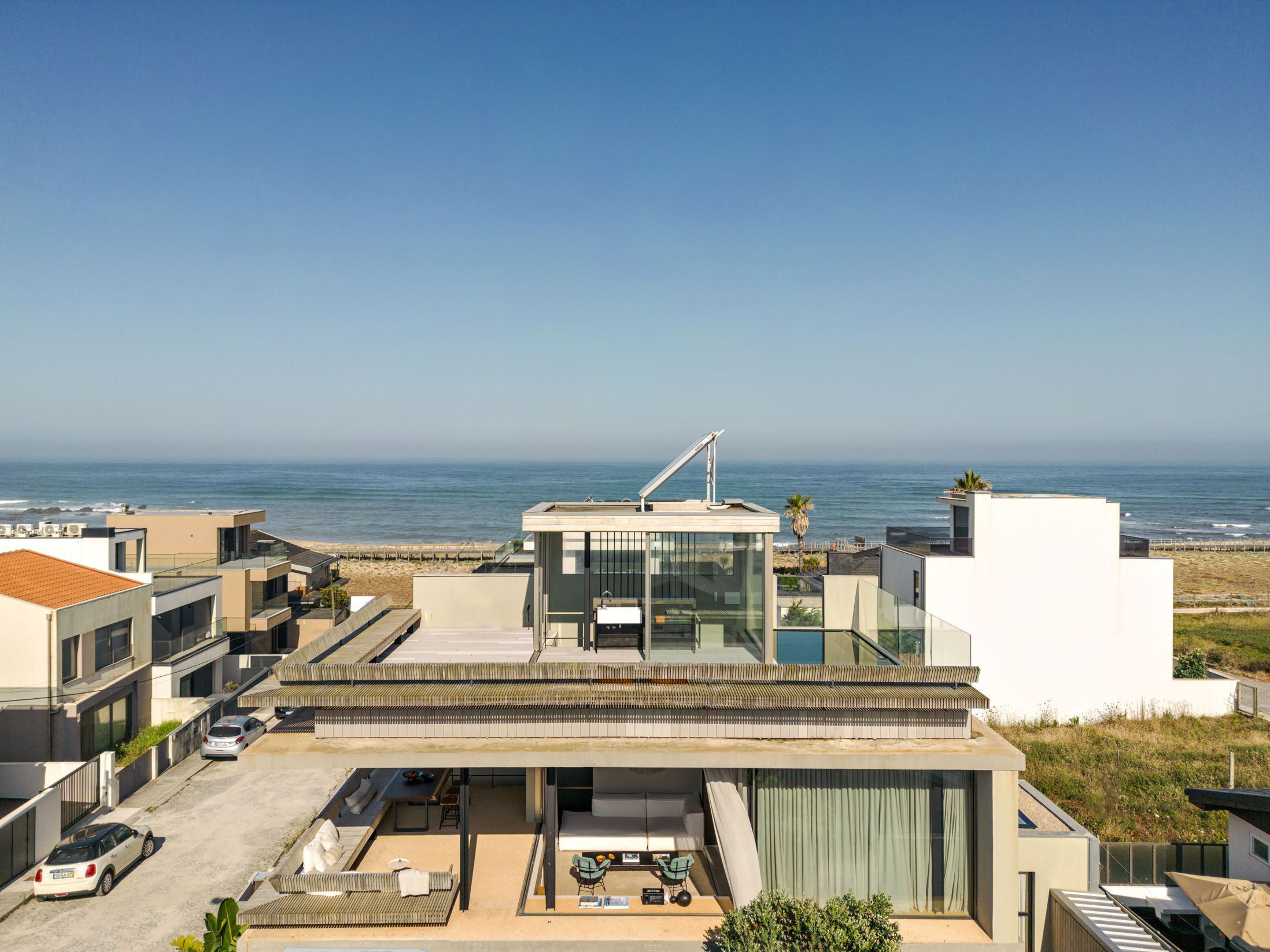
A modest beach house in the Atlantic coast municipality of Matosinhos, Casa Lavra is a masterful blend of interior and exterior forms by the Porto-based WER Studio. Several years in the making, the home covers 184 square metres, with an additional 70 square metres of open space available on the expansive roof deck.
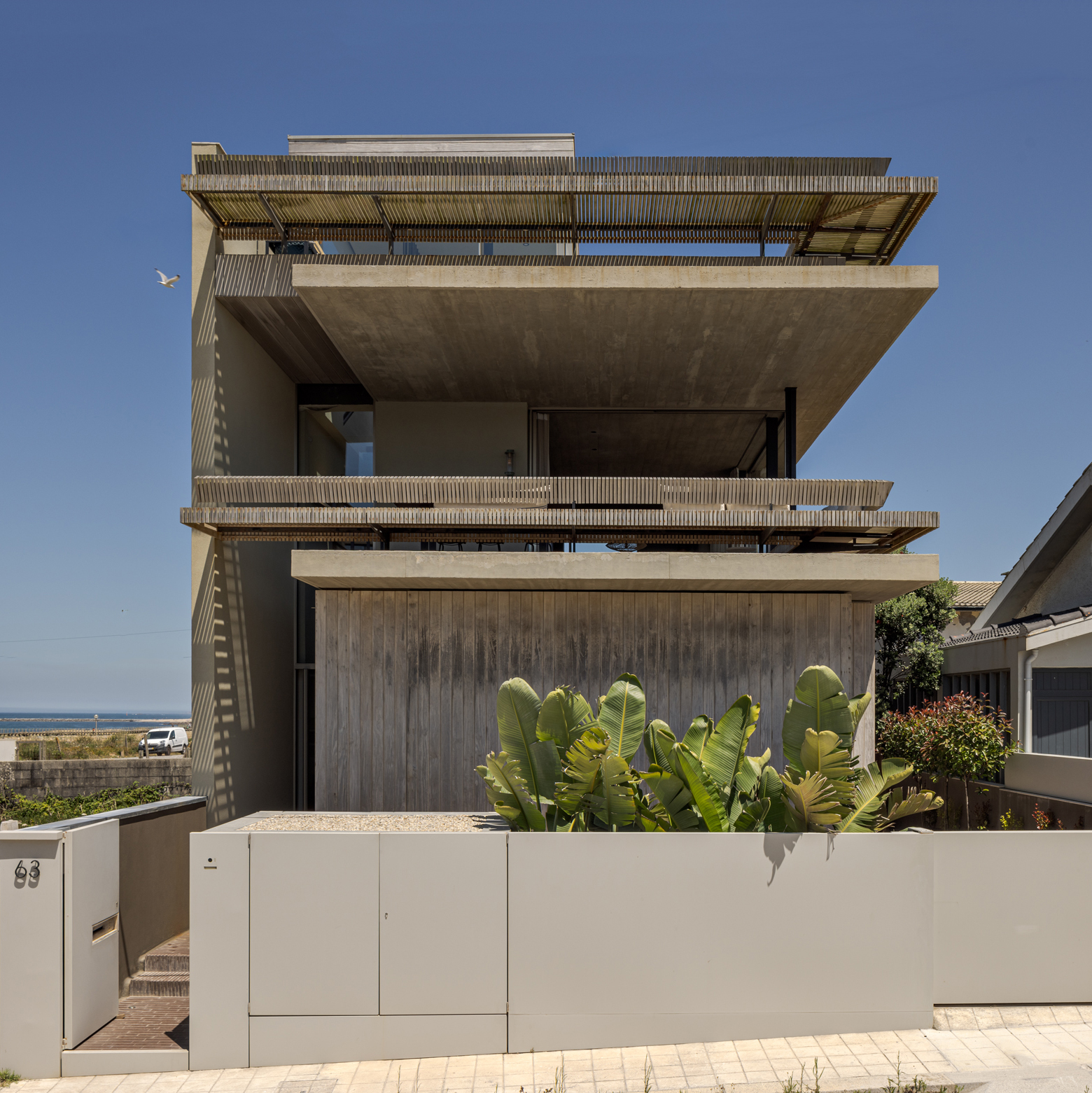
The street facade of Casa Lavra
Explore this Portuguese beach house and its expansive ocean views
The house itself was designed to occupy a small, narrow but deep plot that runs parallel to the beach. To maximise sea views the plan was inverted, with bedrooms and an office located on the ground floor, arranged around a central courtyard, with social appears on the upper floor and rooftop deck. This stacked array is expressed via the layered façade, which combines the concrete and steel structure with the carefully composed wooded wraparound benches on the upper two floors.

Casa Lavra's living spaces are on the upper two floors
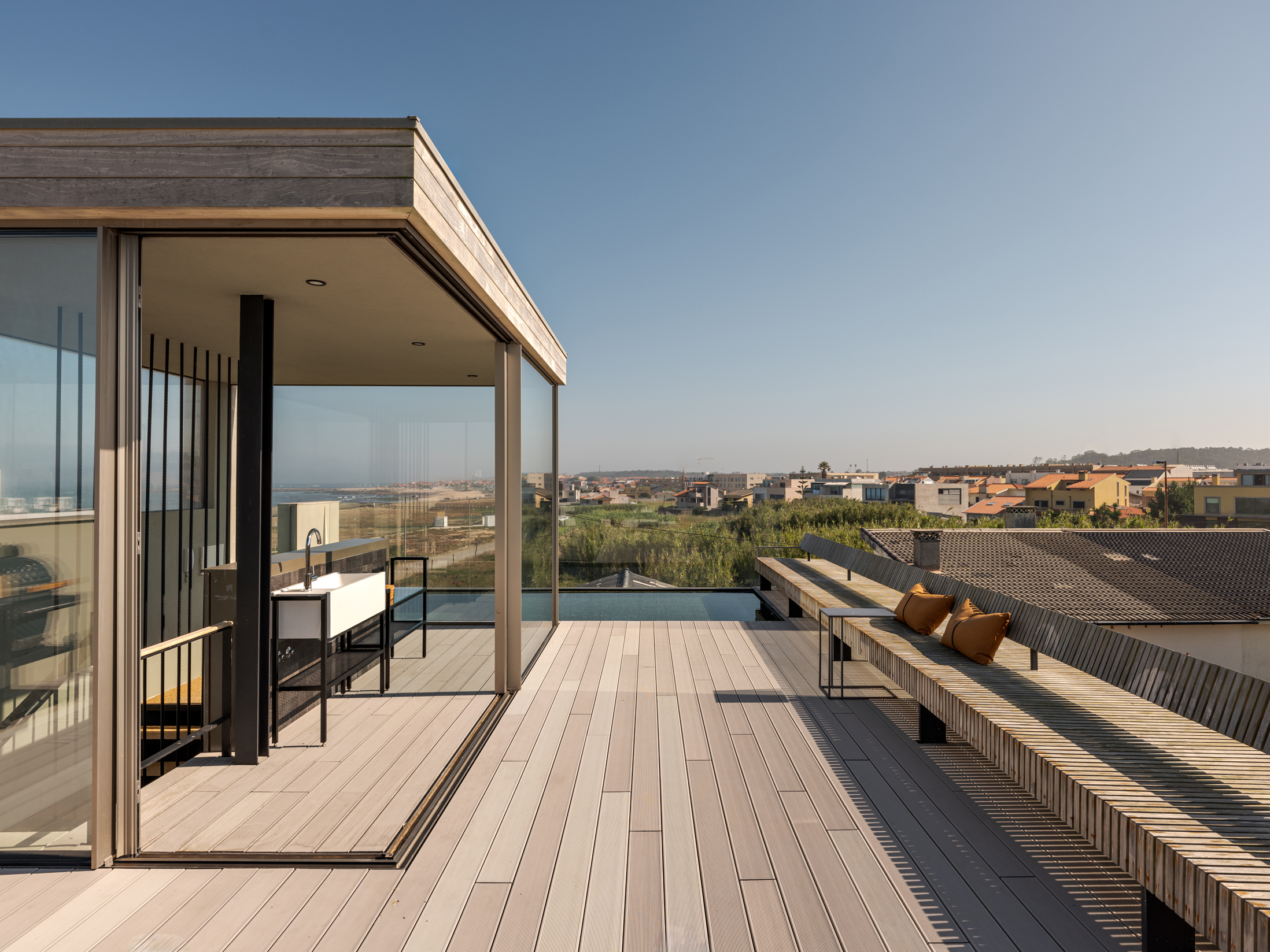
The roof deck, complete with pool
The staircase at the core of the house is clad in traditional clay bricks, as are the floors, with vertical steel cables serving as both structural support and balustrade on the upper floors. Clay bricks are used on the ground floor exterior, right from the street entrance, giving the house a monolithic, rooted feel.
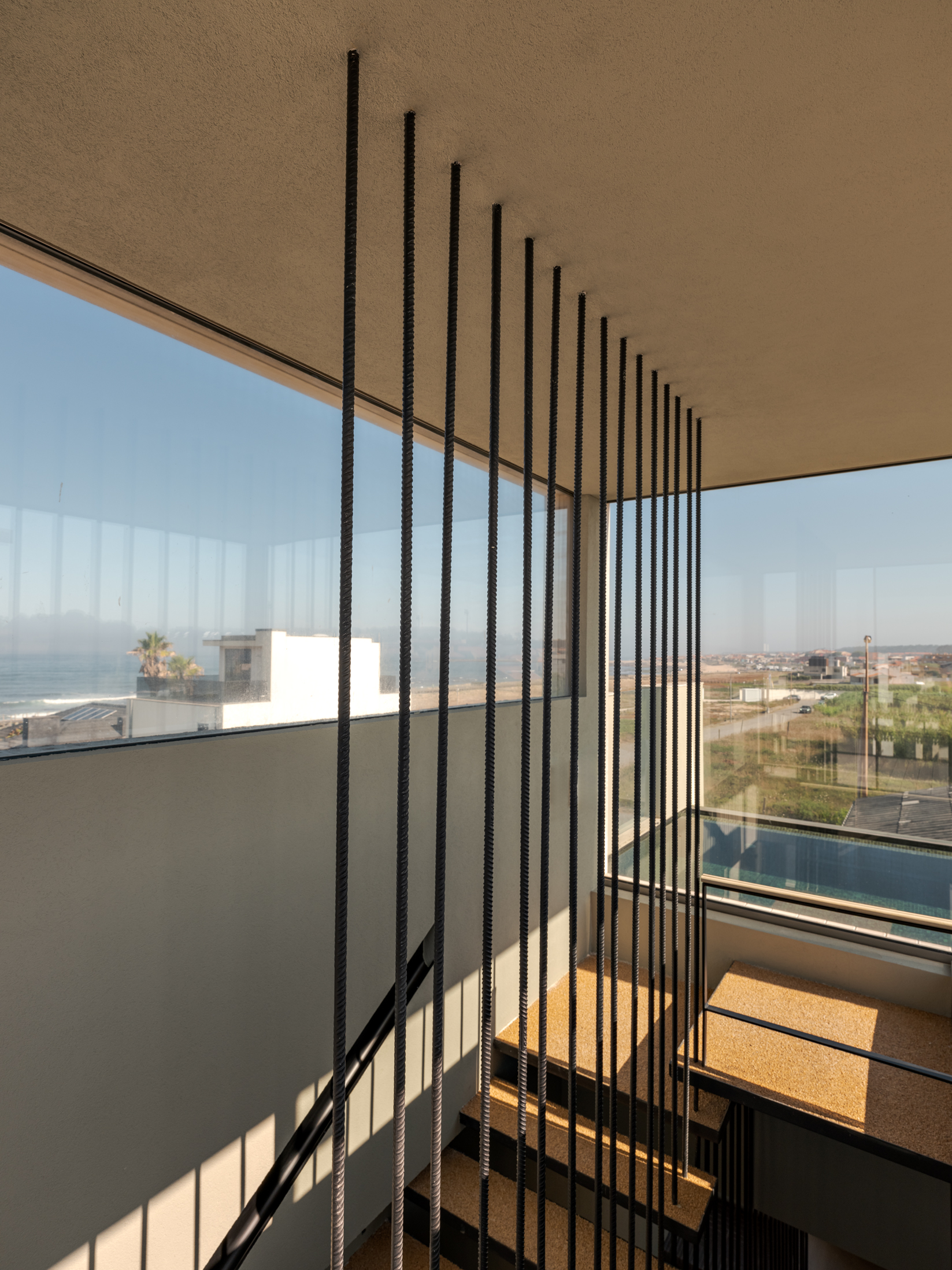
The staircase leading up to the roof deck
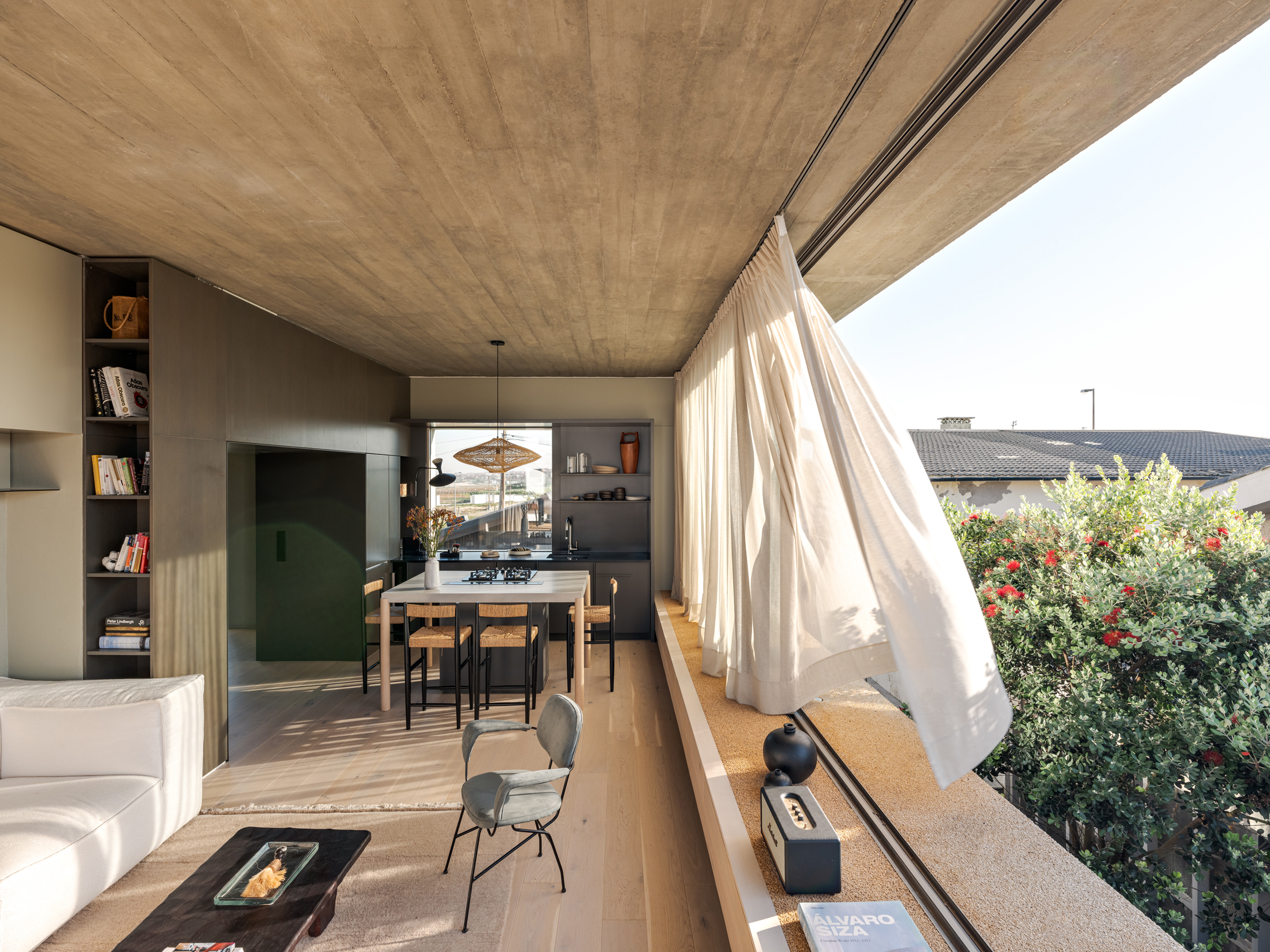
Sliding glazing opens up the upper floor living and dining area
The architects have ensured the concrete and steel structure is evident through the space, from the shuttered concrete ceiling slab in the main living space to the slender I-beam that runs through the covered balcony. There are Brazilian influences here, according to the architects, particularly in the materiality of the various surface finishes, from terracotta to terrazzo to carefully delineated formwork patterns and wooden decking.
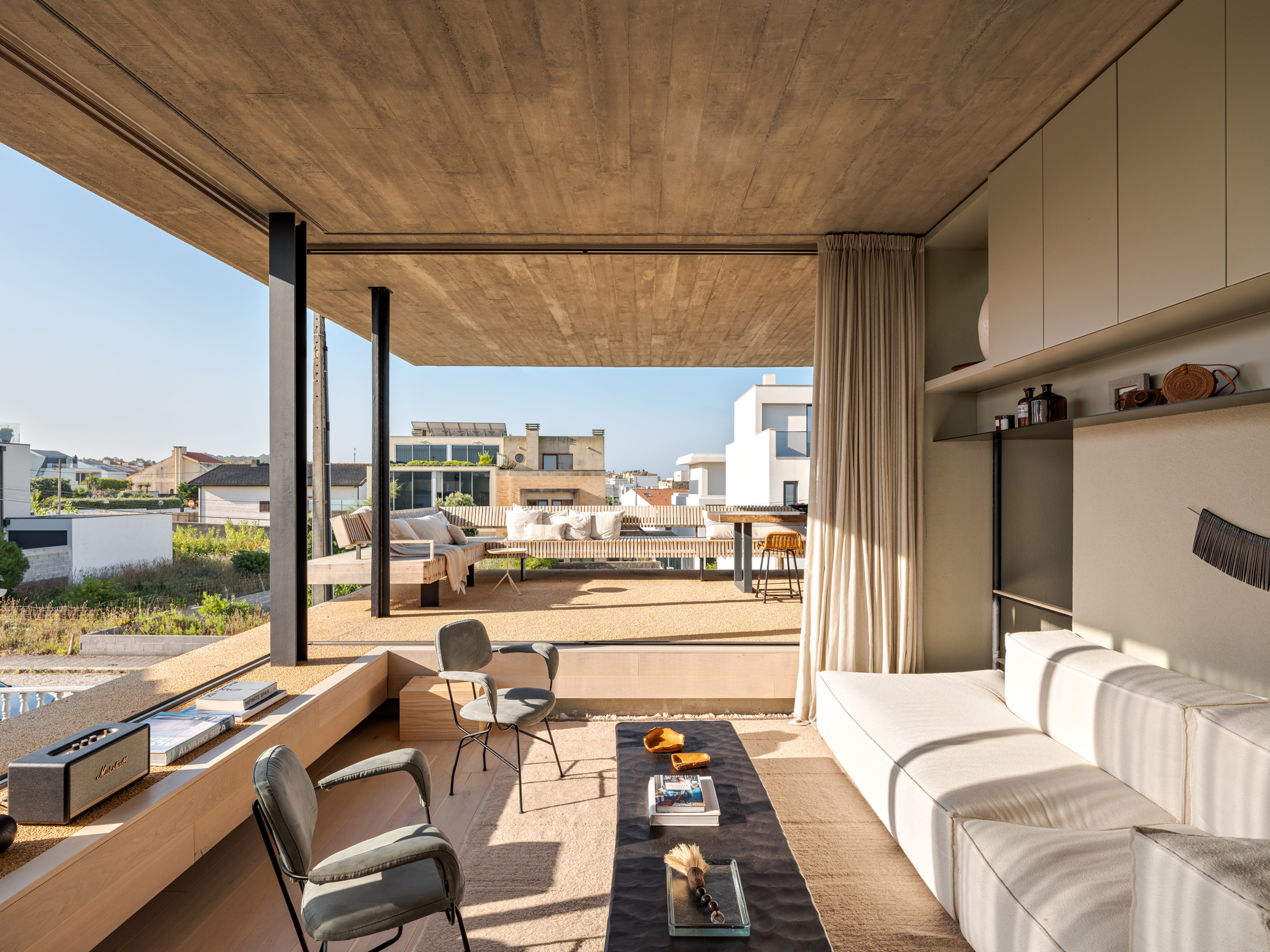
Looking out of the living room across the nearby houses
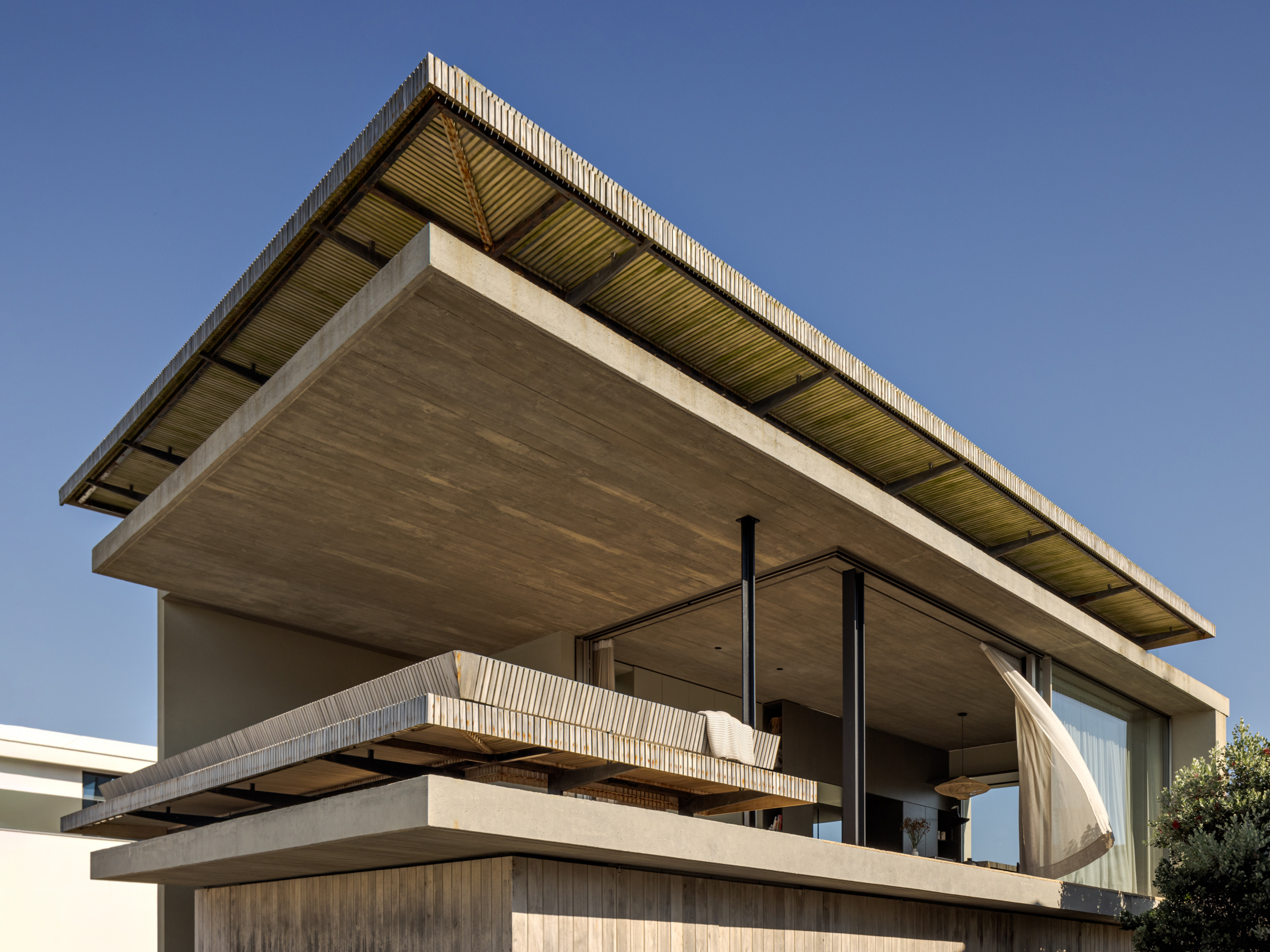
Wraparound wooden benches on the decks double as balustrades
The main living space can be opened up on two sides, with the ‘sunken’ seating, dining and kitchen area completely cross-ventilated in the hot summers. Curtain tracks were carefully moulded into the concrete ceilings, allowing diaphanous material to shield against bugs and prying eyes. Sliding aluminium framed windows slot into place in the colder months.
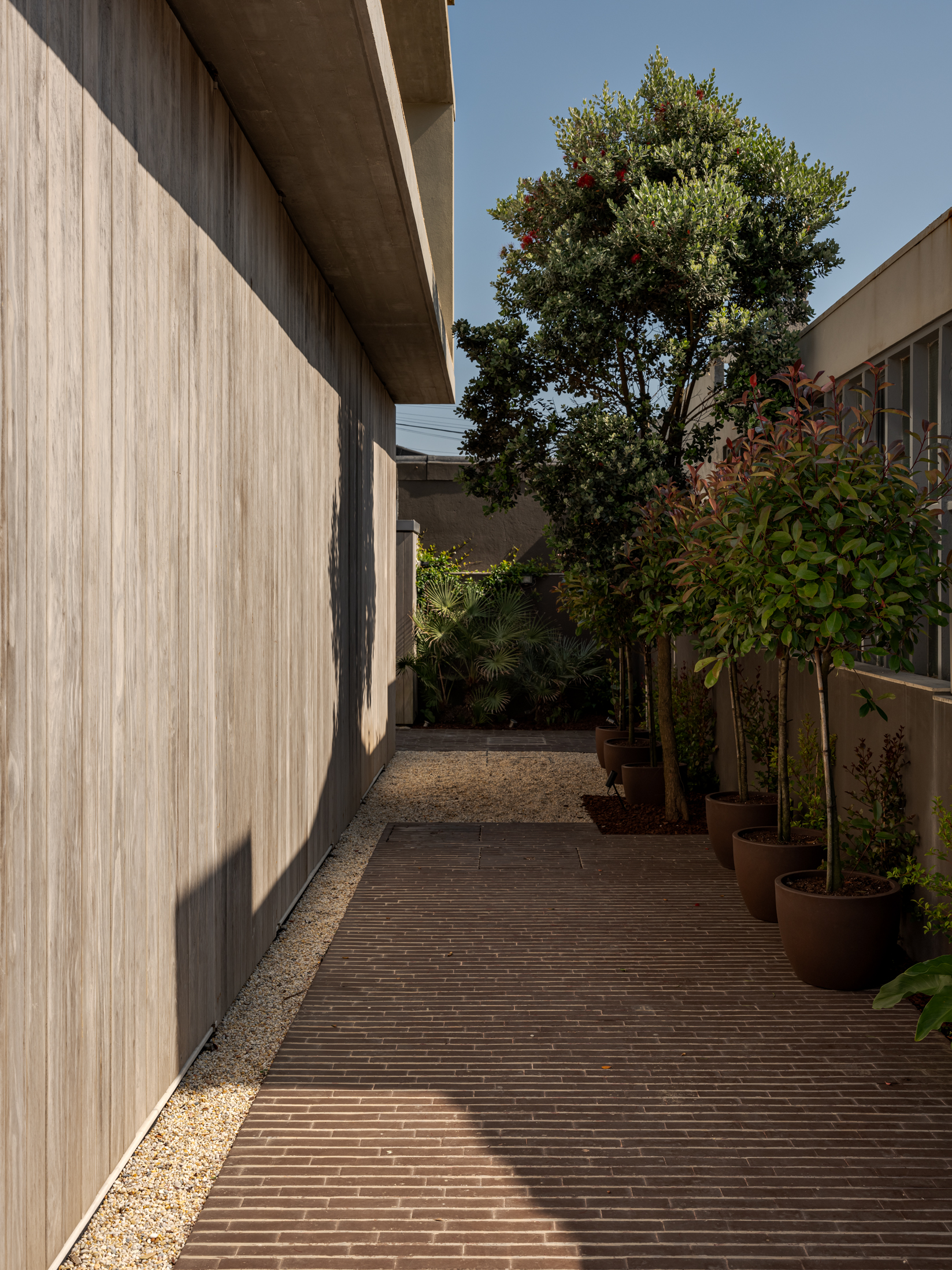
The private courtyard garden on the ground floor
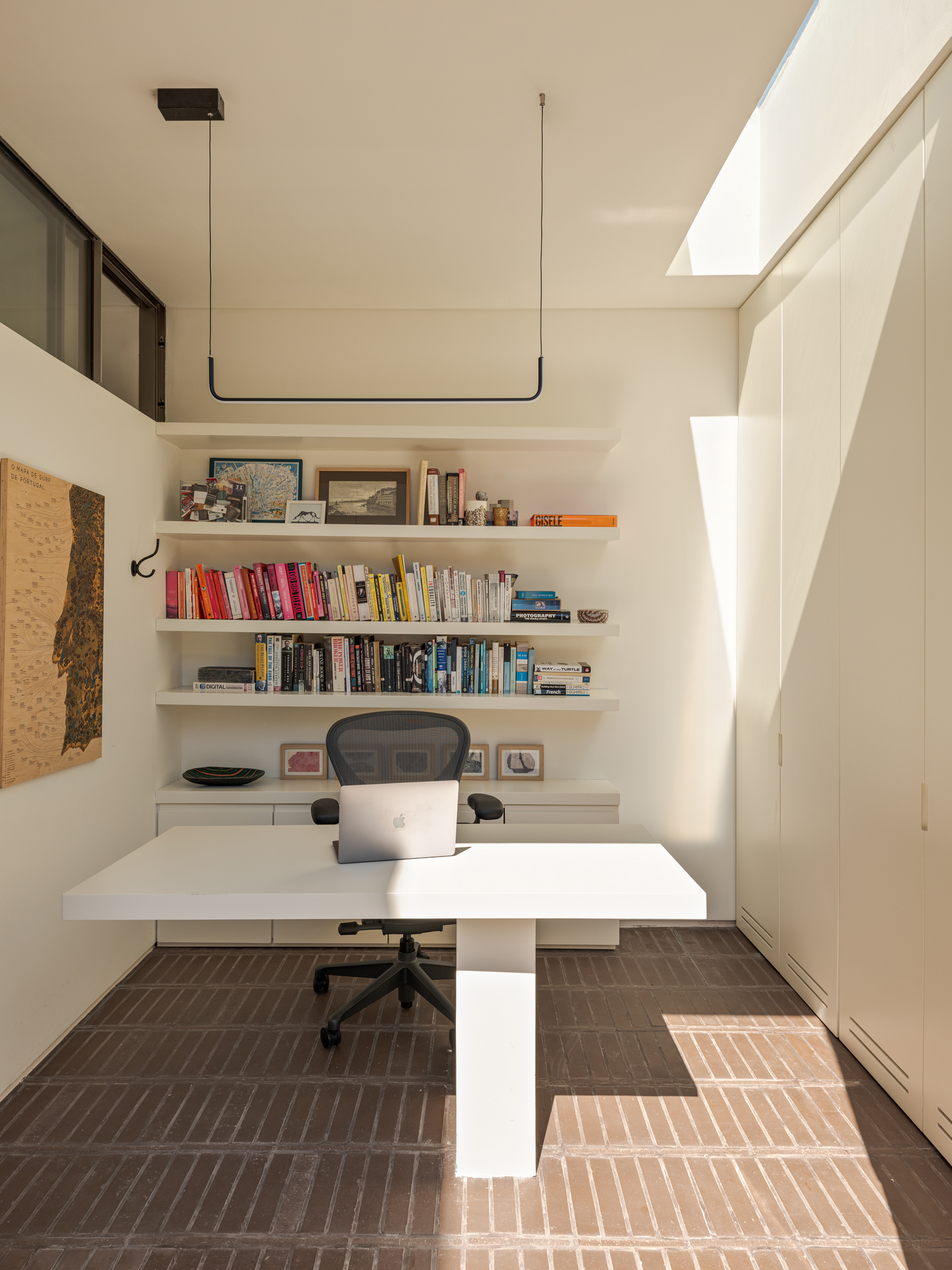
The ground floor study is top lit
Adjoining the living room and the top deck pavilion are a series of wrapround timber benches which also double up as guard rails. On the lower floor, the bedrooms are shielded with wooden shutters for both privacy and rebuffing solar gain, using moisture resistant Accoya wood to avoid the challenges of the seaside atmosphere.
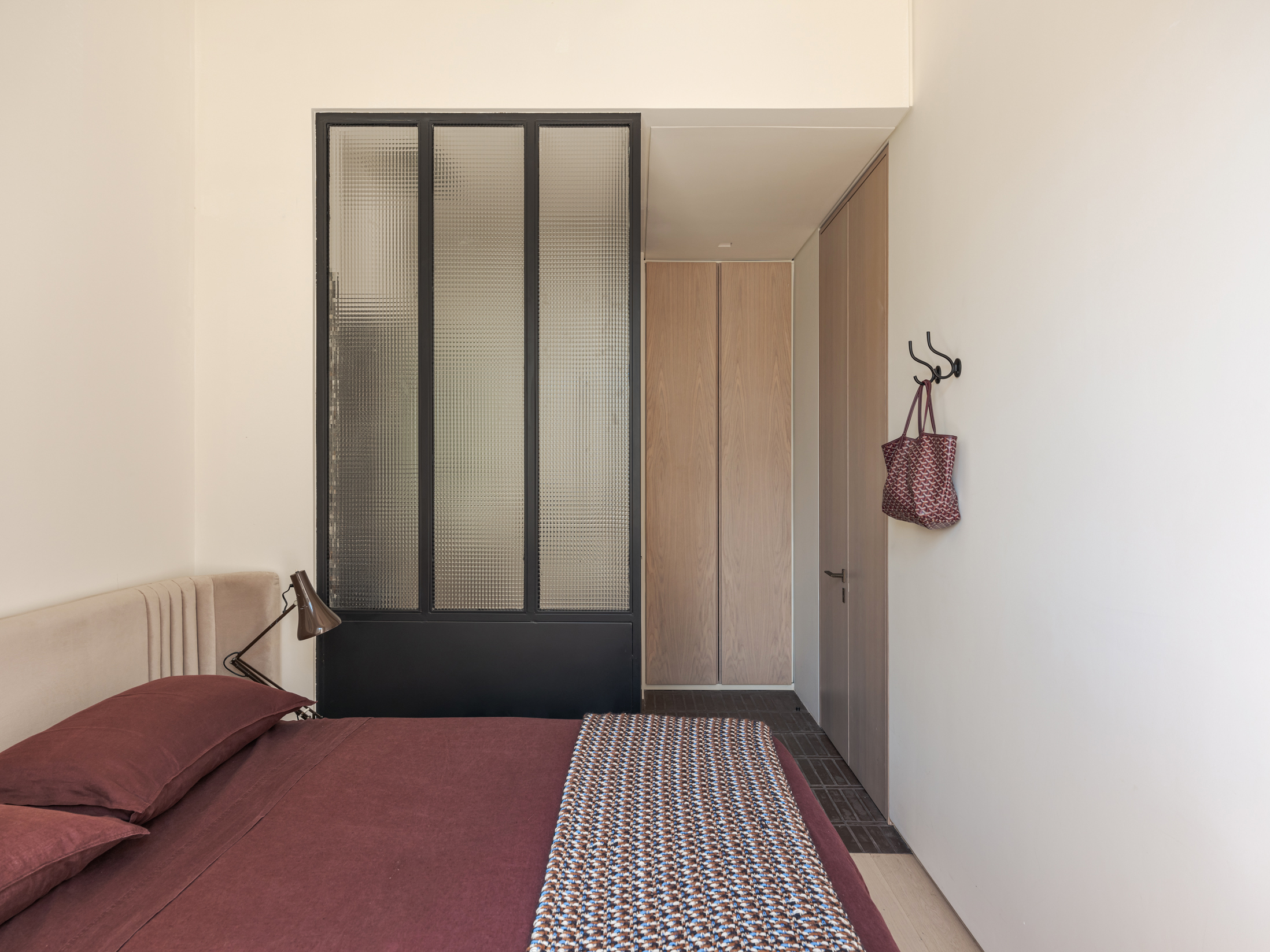
Bedrooms are modest, tucked away in the private ground floor
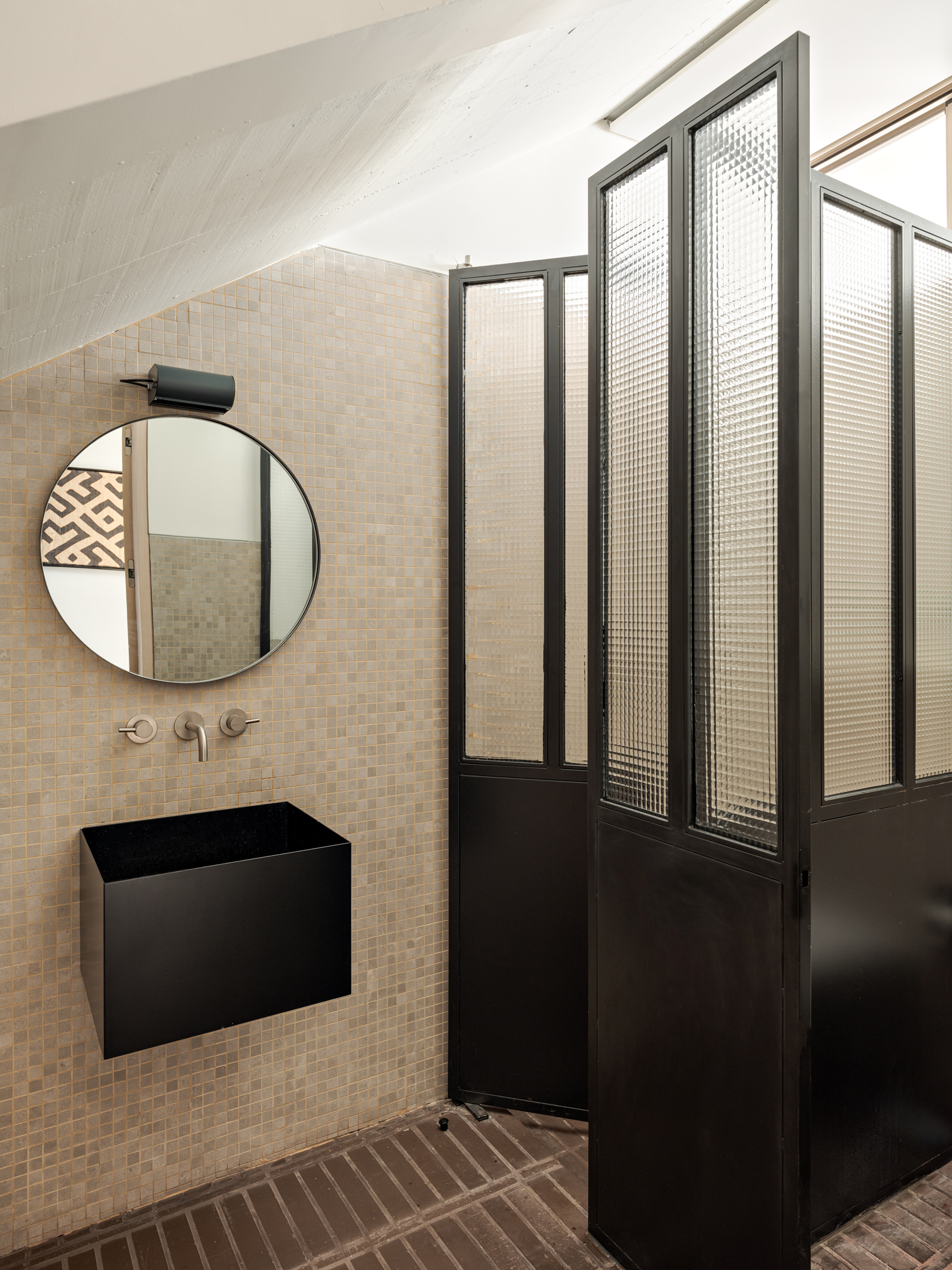
Bathrooms are screened with half-glazed doors
Other traditional elements that have been upgraded and reinterpreted include the textured glass on the doors of the bathrooms. Storage and cabinetry is also carefully considered, all of it created especially for the house. Underfloor heating is provided for the colder months, whilst the profusion of opening windows for cross ventilation negates the need for mechanical air conditioning.
Receive our daily digest of inspiration, escapism and design stories from around the world direct to your inbox.
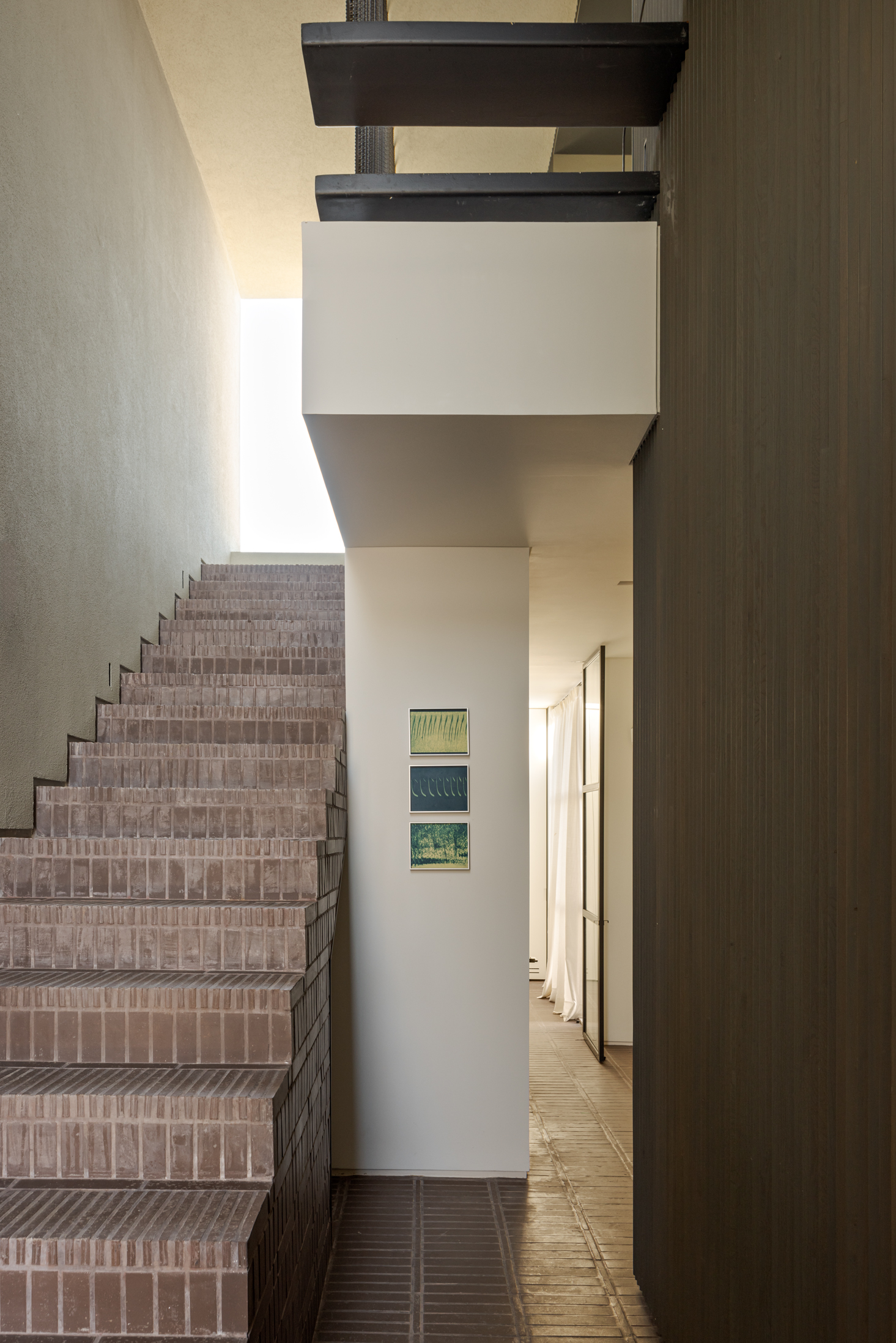
The terracotta clad staircase leads up to the living spaces from the ground floor
Finally, there’s the house’s pièce de résistance, an expansive roof deck complete with a built-in pool that overlooks the beach, ensuring the property is a year-round destination for the owners.
Jonathan Bell has written for Wallpaper* magazine since 1999, covering everything from architecture and transport design to books, tech and graphic design. He is now the magazine’s Transport and Technology Editor. Jonathan has written and edited 15 books, including Concept Car Design, 21st Century House, and The New Modern House. He is also the host of Wallpaper’s first podcast.
-
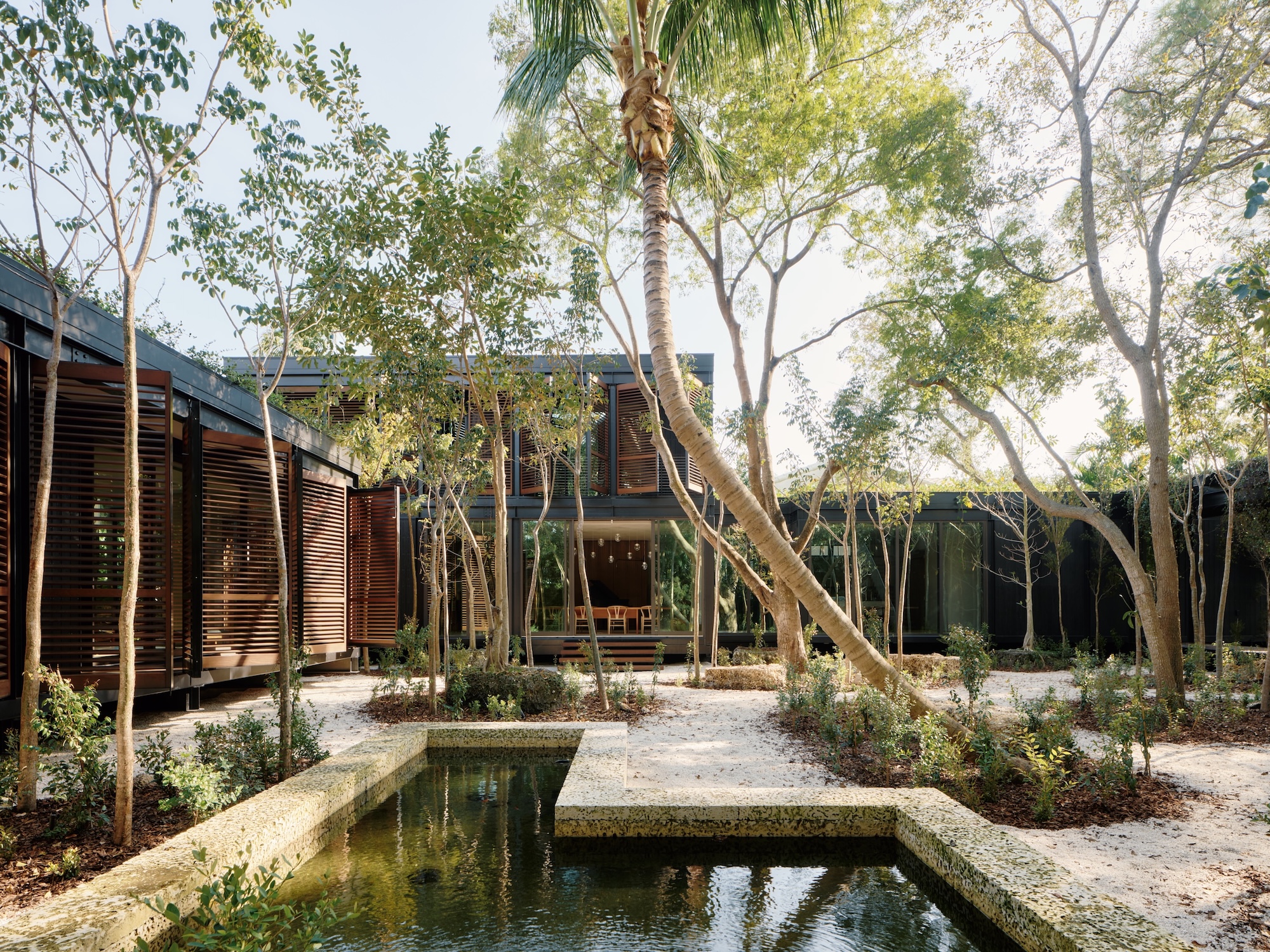 This ethereal Miami residence sprouted out of a wild, jungle-like garden
This ethereal Miami residence sprouted out of a wild, jungle-like gardenA Miami couple tapped local firm Brillhart Architecture to design them a house that merged Florida vernacular, Paul Rudolph and 'too many plants to count’
-
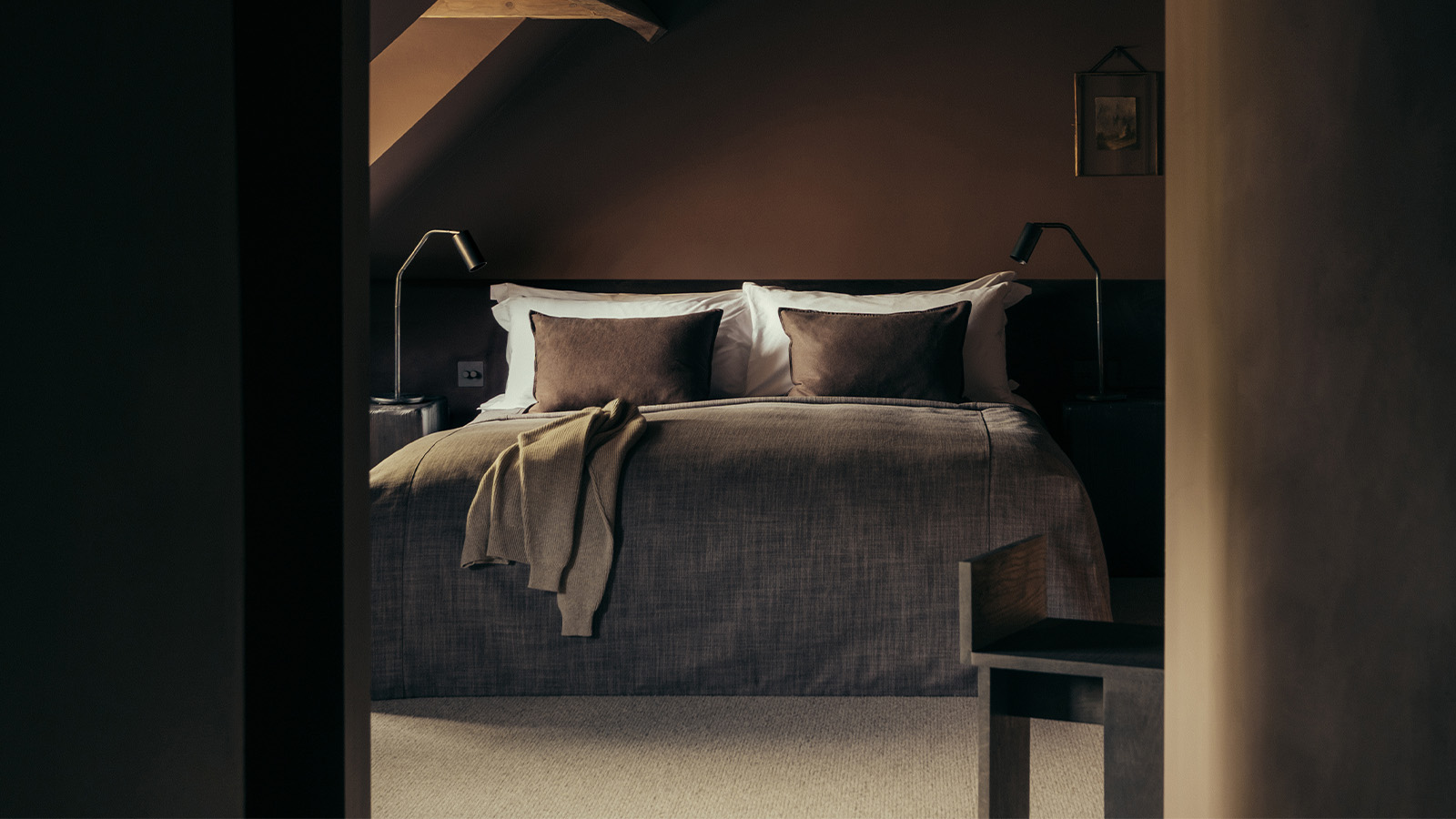 At this charming bolthole in The Cotswolds, doing nothing is an art form
At this charming bolthole in The Cotswolds, doing nothing is an art formLeave your mobile on ‘do not disturb’, switch off and slow down at this 16th-century manor-turned-hotel
-
 Out of office: The Wallpaper* editors’ picks of the week
Out of office: The Wallpaper* editors’ picks of the weekIt’s been a week of escapism: daydreams of Ghana sparked by lively local projects, glimpses of Tokyo on nostalgic film rolls, and a charming foray into the heart of Christmas as the festive season kicks off in earnest
-
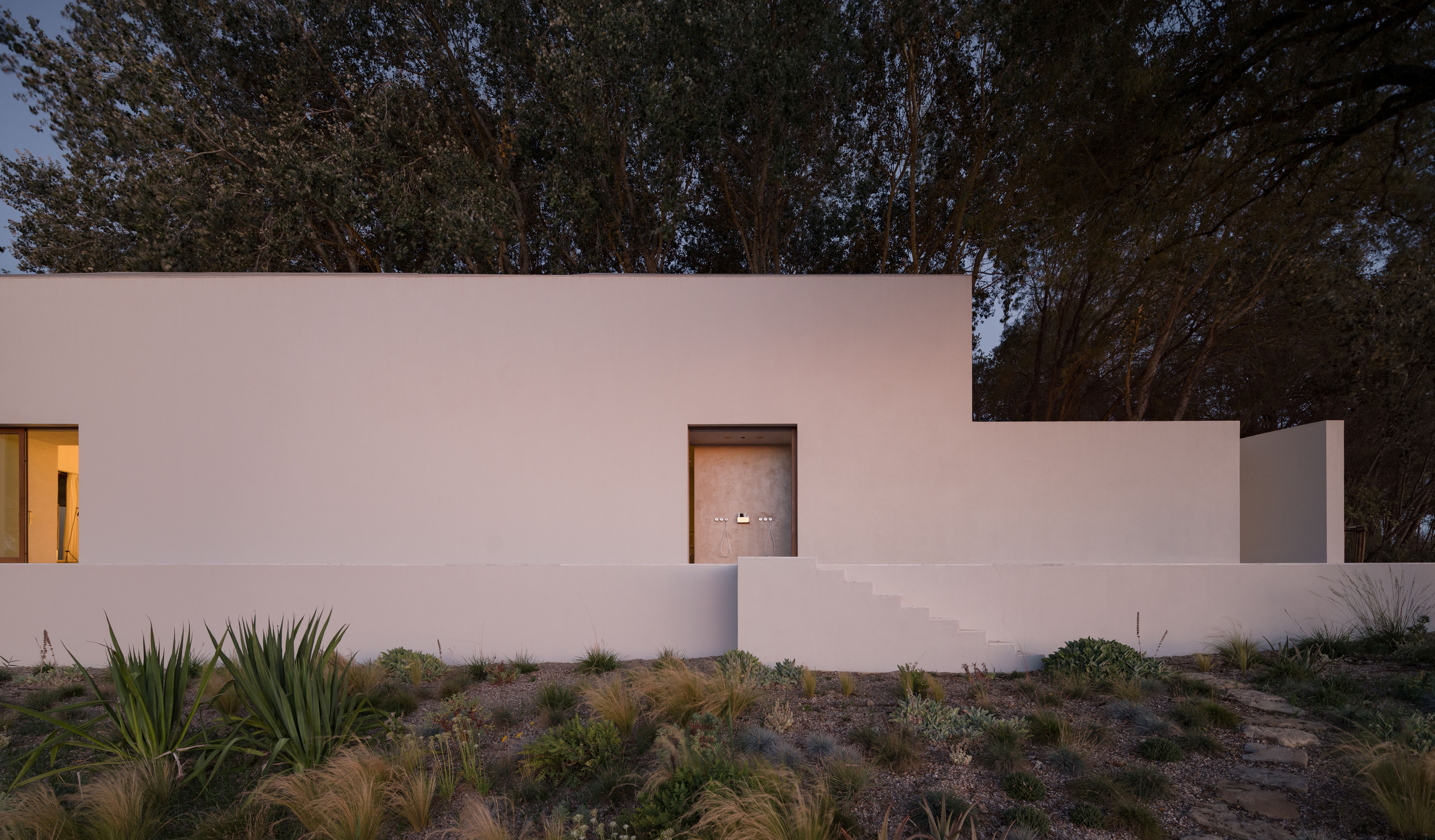 Soothing and symmetrical, this Portuguese house is a minimalist haven for two musicians
Soothing and symmetrical, this Portuguese house is a minimalist haven for two musiciansA Portuguese house near Lisbon, built on the ruins of an old winery, Quinta do Álamo by Atelier Matteo Arnone has symmetry at its heart
-
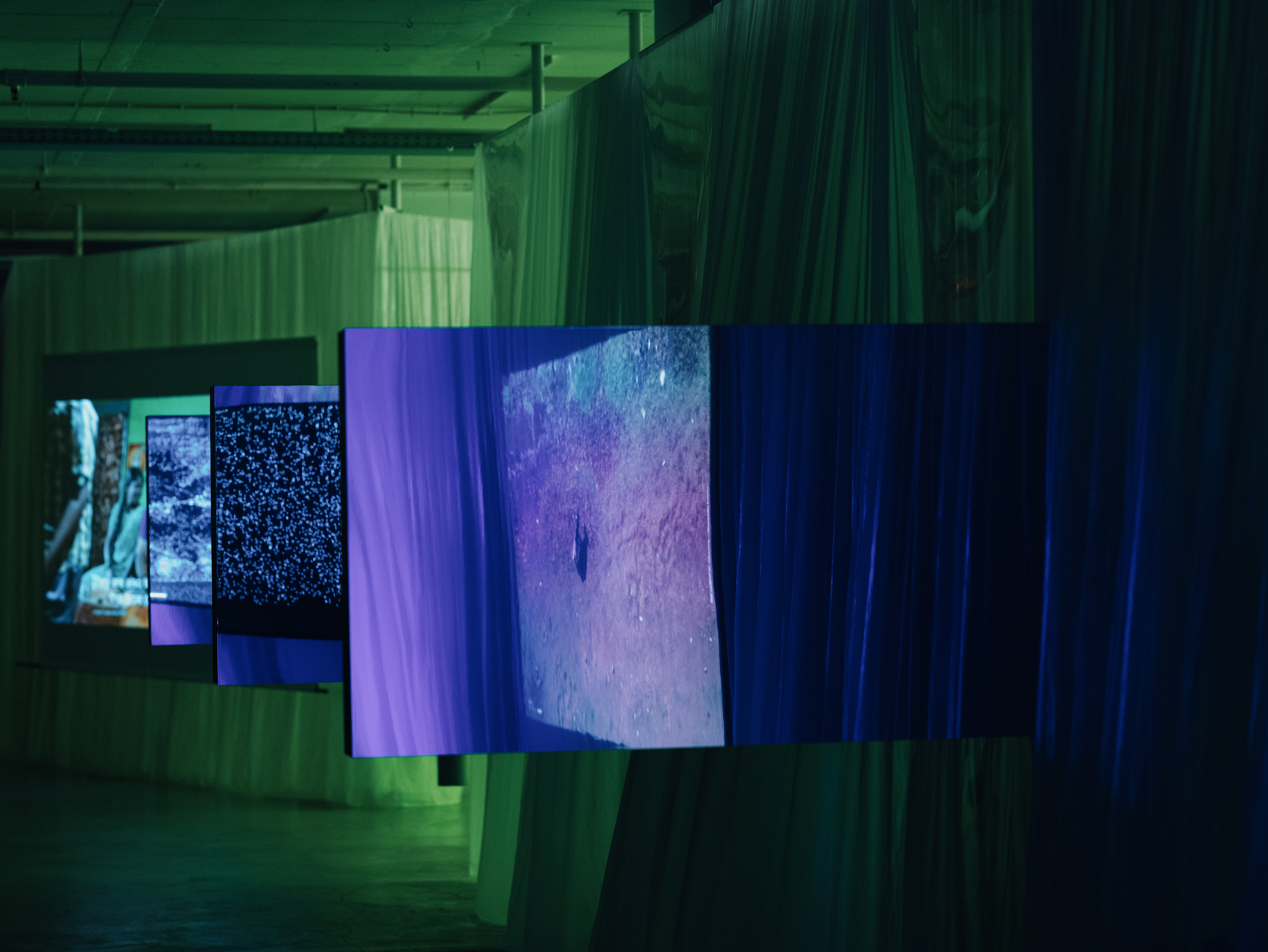 2025 Lisbon Architecture Triennale ponders the (literal and figurative) weight of humanity
2025 Lisbon Architecture Triennale ponders the (literal and figurative) weight of humanityJoin us on a tour of the 2025 Lisbon Architecture Triennale, exploring the question ‘How Heavy is the City?’ and our impact on the planet
-
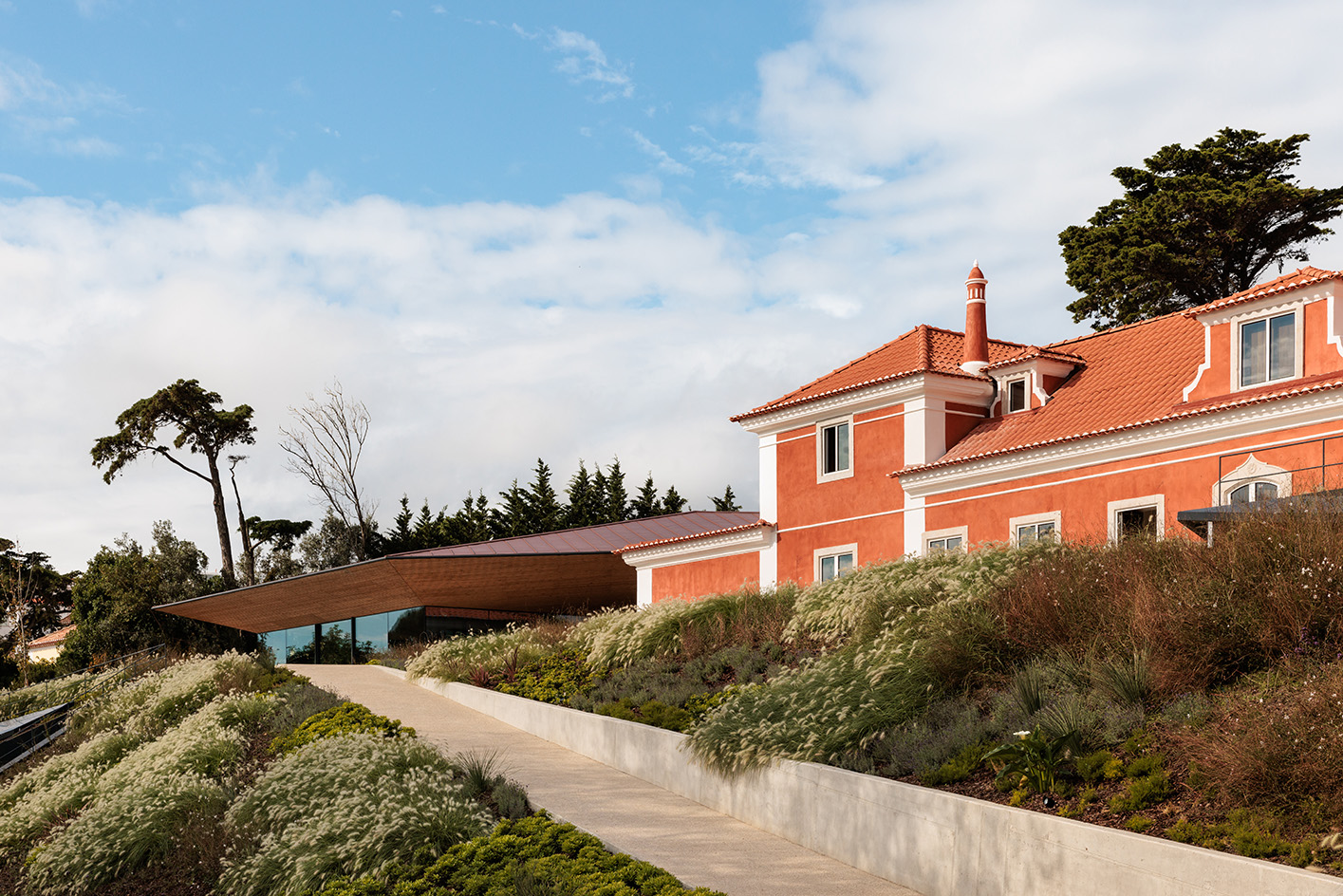 Tour the Albuquerque Foundation, Portugal’s new ceramics hub, where the historic and contemporary meet
Tour the Albuquerque Foundation, Portugal’s new ceramics hub, where the historic and contemporary meetA new cultural destination dedicated to ceramics, The Albuquerque Foundation by Bernardes Arquitetura opens its doors in Sintra, Portugal
-
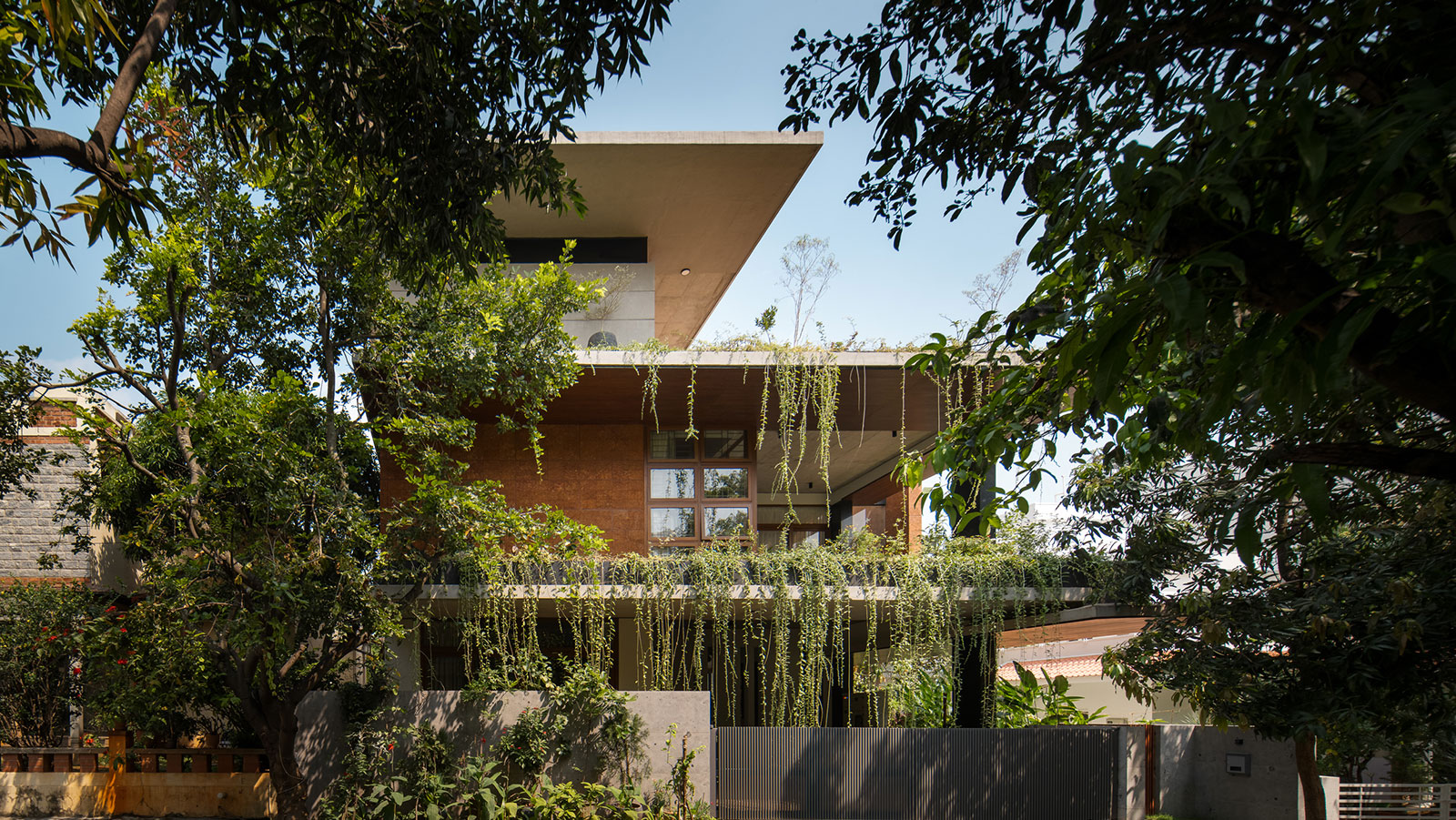 Year in review: the top 12 houses of 2024, picked by architecture director Ellie Stathaki
Year in review: the top 12 houses of 2024, picked by architecture director Ellie StathakiThe top 12 houses of 2024 comprise our finest and most read residential posts of the year, compiled by Wallpaper* architecture & environment director Ellie Stathaki
-
 Wallpaper* Architects’ Directory 2024: meet the practices
Wallpaper* Architects’ Directory 2024: meet the practicesIn the Wallpaper* Architects Directory 2024, our latest guide to exciting, emerging practices from around the world, 20 young studios show off their projects and passion
-
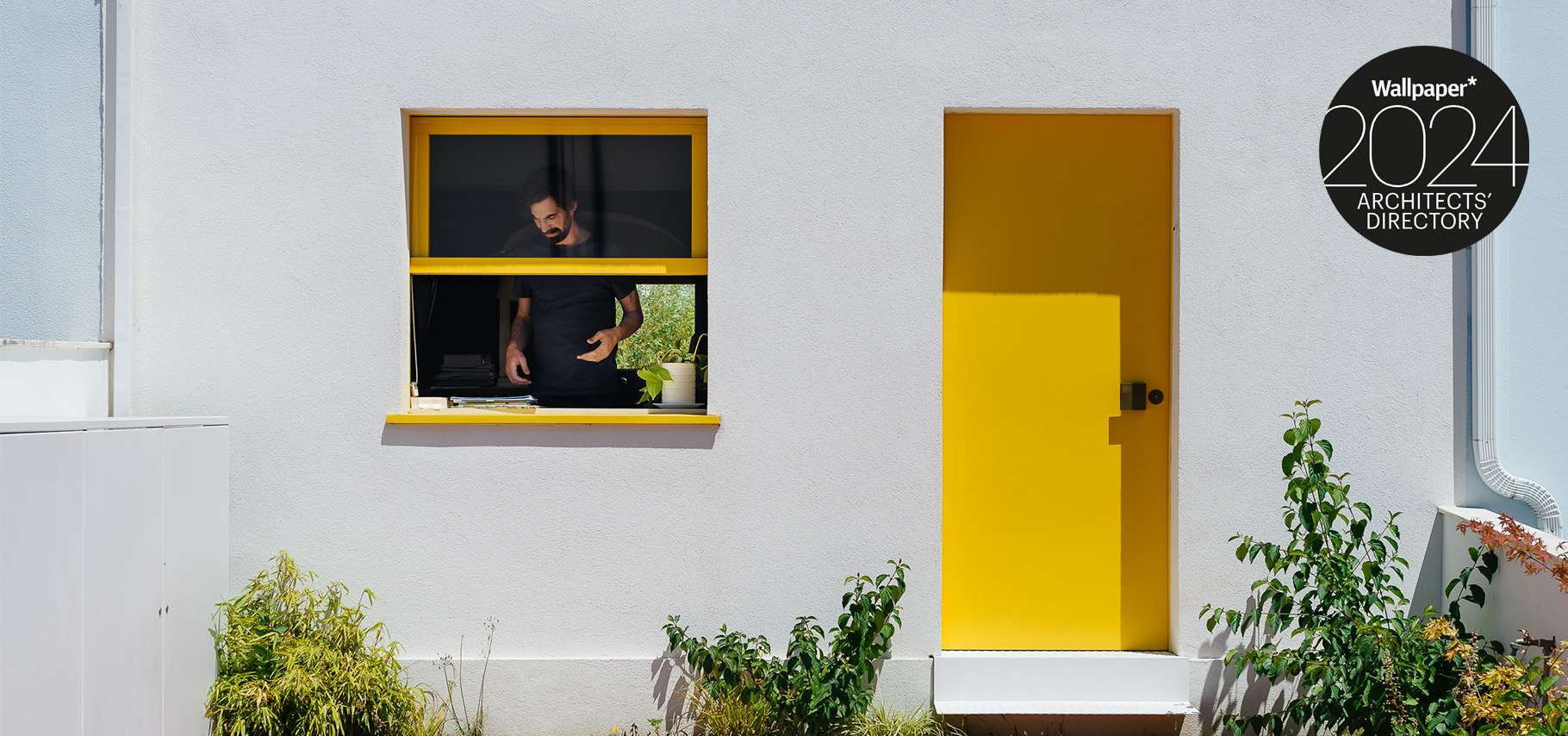 Branco del Rio's House AA8 brings a pop of colour to its Portuguese neighbourhood
Branco del Rio's House AA8 brings a pop of colour to its Portuguese neighbourhoodBased in Portugal, Branco del Rio Arquitectos joins the Wallpaper* Architects’ Directory 2024, our annual round-up of exciting emerging architecture studios
-
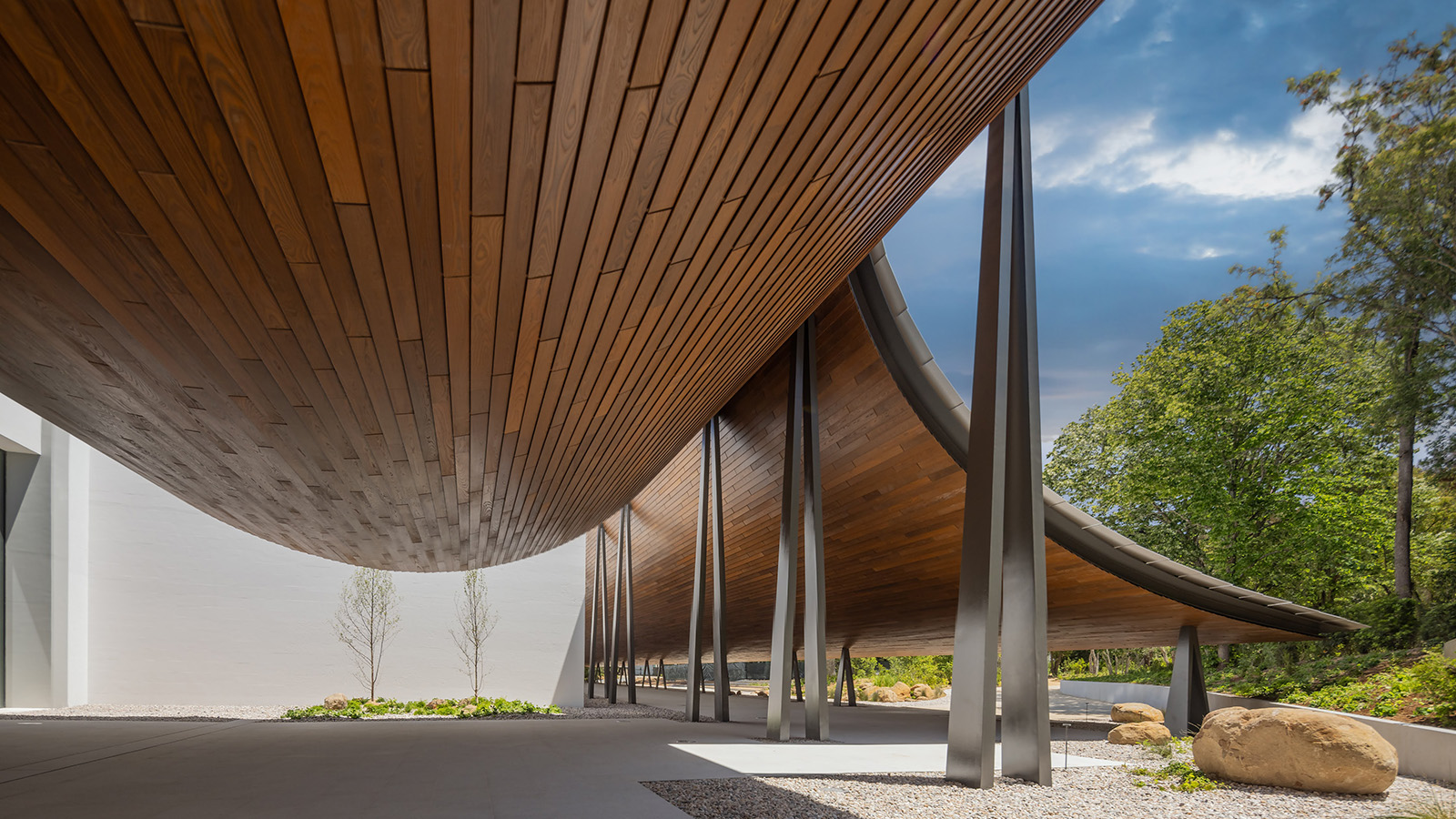 Gulbenkian Foundation's new art centre by Kengo Kuma is light and inviting
Gulbenkian Foundation's new art centre by Kengo Kuma is light and invitingLisbon's Gulbenkian Foundation reveals its redesign and new contemporary art museum, Centro de Arte Moderna (CAM), by Kengo Kuma with landscape architects VDLA
-
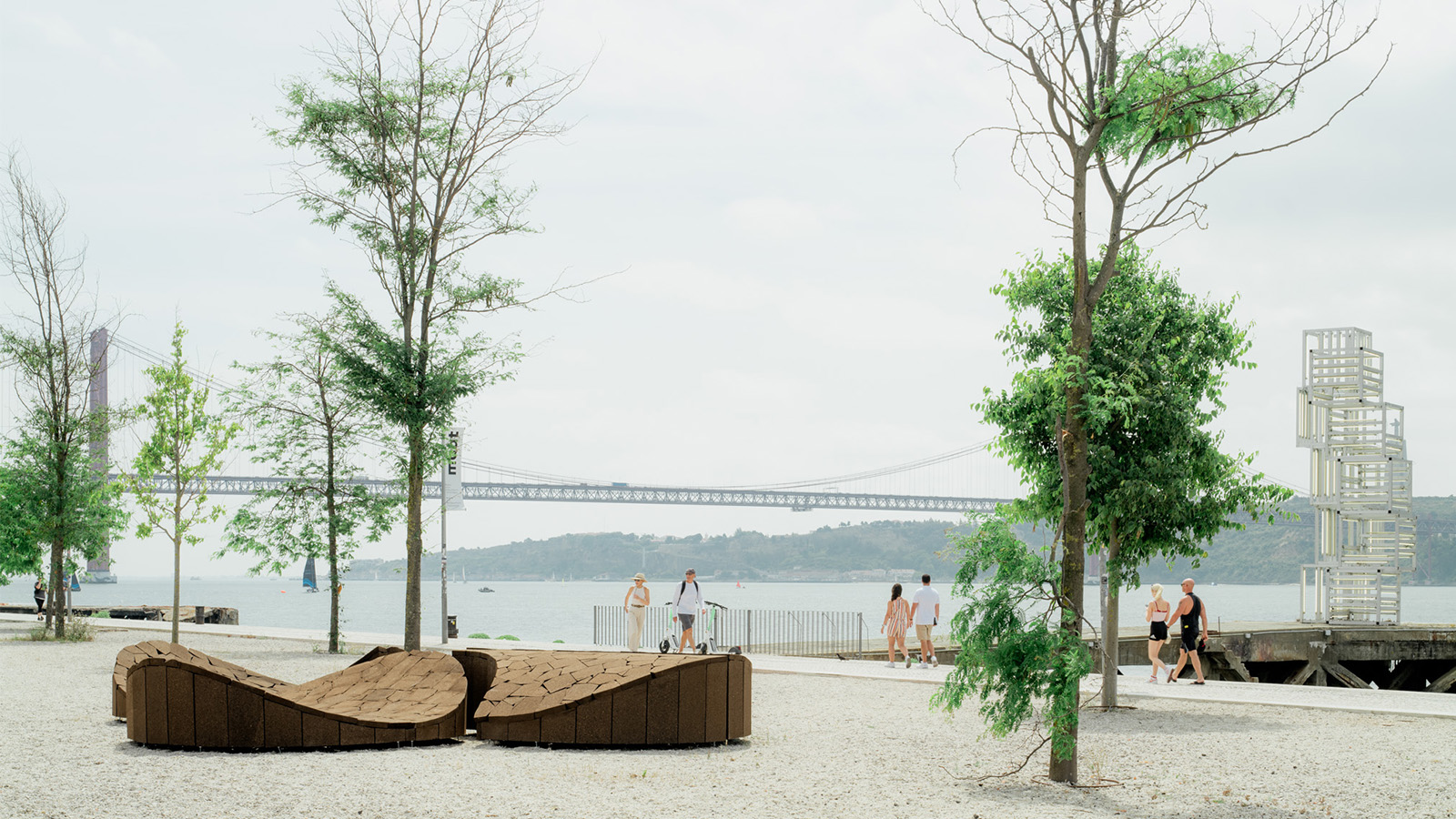 City Cortex celebrates cork’s versatility with public installations in Lisbon
City Cortex celebrates cork’s versatility with public installations in LisbonCity Cortex, an urban project in Lisbon developed by Amorim, celebrates cork as a sustainable material with installations by Gabriel Calatrava, Leong Leong, Yves Behar and more